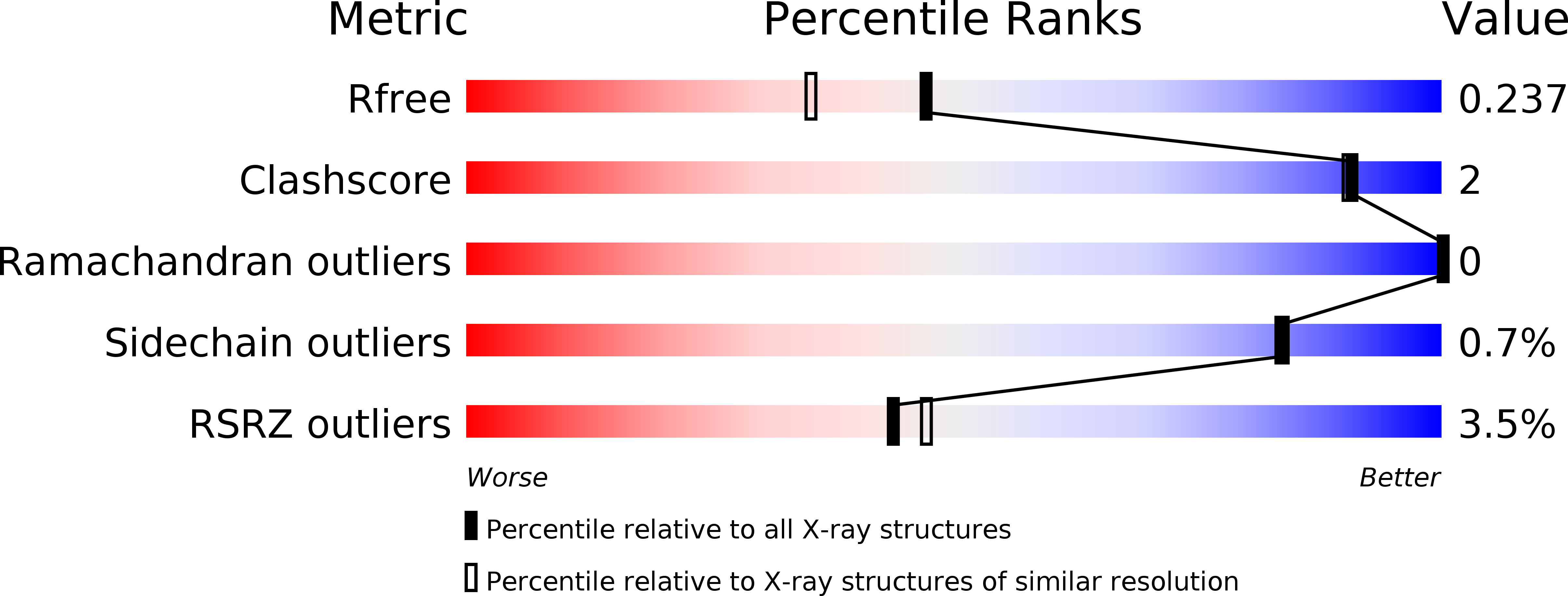Structural basis of Lewis(b) antigen binding by the Helicobacter pylori adhesin BabA.
Hage, N., Howard, T., Phillips, C., Brassington, C., Overman, R., Debreczeni, J., Gellert, P., Stolnik, S., Winkler, G.S., Falcone, F.H.(2015) Sci Adv 1: e1500315-e1500315
- PubMed: 26601230
- DOI: https://doi.org/10.1126/sciadv.1500315
- Primary Citation of Related Structures:
4ZH0, 4ZH7 - PubMed Abstract:
Helicobacter pylori is a leading cause of peptic ulceration and gastric cancer worldwide. To achieve colonization of the stomach, this Gram-negative bacterium adheres to Lewis(b) (Le(b)) antigens in the gastric mucosa using its outer membrane protein BabA. Structural information for BabA has been elusive, and thus, its molecular mechanism for recognizing Le(b) antigens remains unknown. We present the crystal structure of the extracellular domain of BabA, from H. pylori strain J99, in the absence and presence of Le(b) at 2.0- and 2.1-Å resolutions, respectively. BabA is a predominantly α-helical molecule with a markedly kinked tertiary structure containing a single, shallow Le(b) binding site at its tip within a β-strand motif. No conformational change occurs in BabA upon binding of Le(b), which is characterized by low affinity under acidic [K D (dissociation constant) of ~227 μM] and neutral (K D of ~252 μM) conditions. Binding is mediated by a network of hydrogen bonds between Le(b) Fuc1, GlcNAc3, Fuc4, and Gal5 residues and a total of eight BabA amino acids (C189, G191, N194, N206, D233, S234, S244, and T246) through both carbonyl backbone and side-chain interactions. The structural model was validated through the generation of two BabA variants containing N206A and combined D233A/S244A substitutions, which result in a reduction and complete loss of binding affinity to Le(b), respectively. Knowledge of the molecular basis of Le(b) recognition by BabA provides a platform for the development of therapeutics targeted at inhibiting H. pylori adherence to the gastric mucosa.
Organizational Affiliation:
School of Pharmacy, University of Nottingham, University Park, Nottingham NG7 2RD, UK.

















